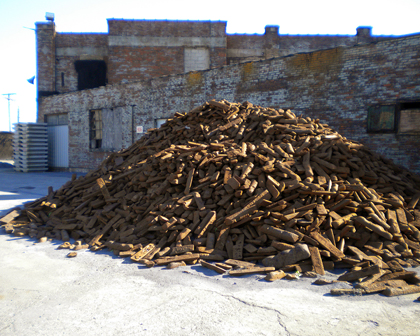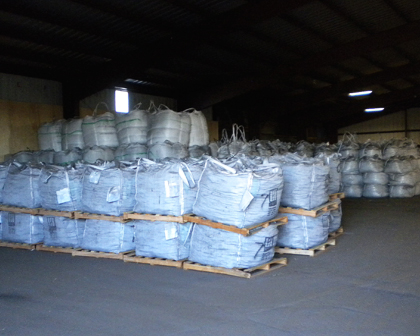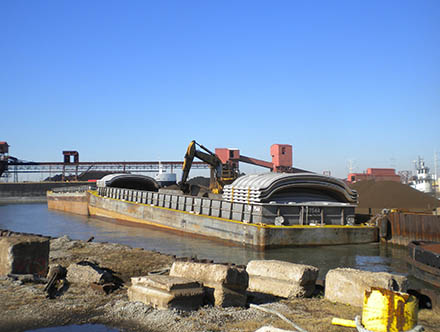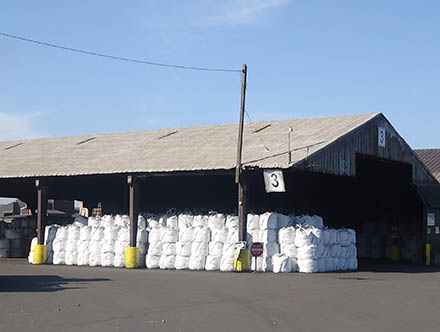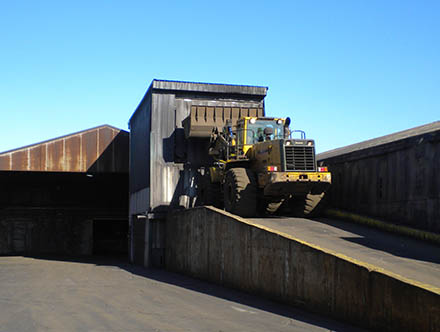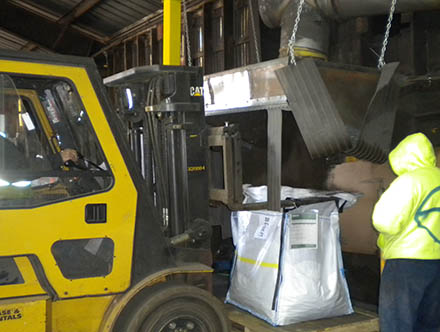Chicago South Avenue “O” Terminal
This terminal is located along the east bank of the Calumet River near milepost 331.1 in Chicago, Illinois. The entire site covers approximately 36 acres of land having seven covered storage buildings for inside storage requirements of bulk and packaged products. It also has extensive outside asphalt and concrete storage pads for outside storage requirements.
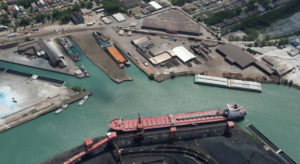
Material Handling
This terminal has the capability to handle bulk and packaged products such as:
- Ferro Alloys
- Frac Sand, Proppants
- Pig Iron
- Silicon Carbide
- Silicon Metal
- Fluorspar
- Primary Metals (zinc, aluminum, tin, copper and nickel)
- Magnesite
- Specialty Alloys
- Refractory products
- Scrap Metal
- Minerals
- Steel (pipe, billets, bars, coils, slabs)
- Fertilizer
- Limestone
Receiving and Shipping
Receiving and shipping of materials are accomplished through three modes of transportation:
- River Barge/Vessel: The terminal uses two loading and unloading river docks equipped with three cranes and three slips for fleeting barges
- Truck: The terminal uses two van/container docks with flatbed handling capability and two portable ramps.
- Railroad: The terminal uses a seven-car dock for handling hopper-cars, boxcars and gondolas with Norfolk Southern & IHB connections.Service Railroad: Norfolk Southern
Location: E-50
10218 South Ave. O
Chicago, IL 60617Service Railroad: IHB
10218 South Ave. O
Chicago, IL 60617
Processing
Avenue “O” has the following processing capabilities:
- Moisture Reduction
- Crushing
- Screening
- Packaging
- Blending
The daily operations of the terminal are managed by:
pchepela@shbellco.com
Office Manager – Tara Olivero
tolivero@shbellco.com
S. H. Bell Company Chicago – Ave. “O” Facility
10218 South Ave. “O”
Chicago, IL 60617
Phone: 1-773-375-1010
Fax: 1-773-978-2687
Shipping information: orders.chgo@shbellco.com
For rate information contact the Sales Department at the Pittsburgh Administrative office:
Jill Tillman – Manager Sales Administration
Stacy Seltzer – Pittsburgh-Based Account Manager
Adam Bell – Vice President of Sales & Marketing
Phone: 1-412-963-9910
Fax: 1-412-963-1206

